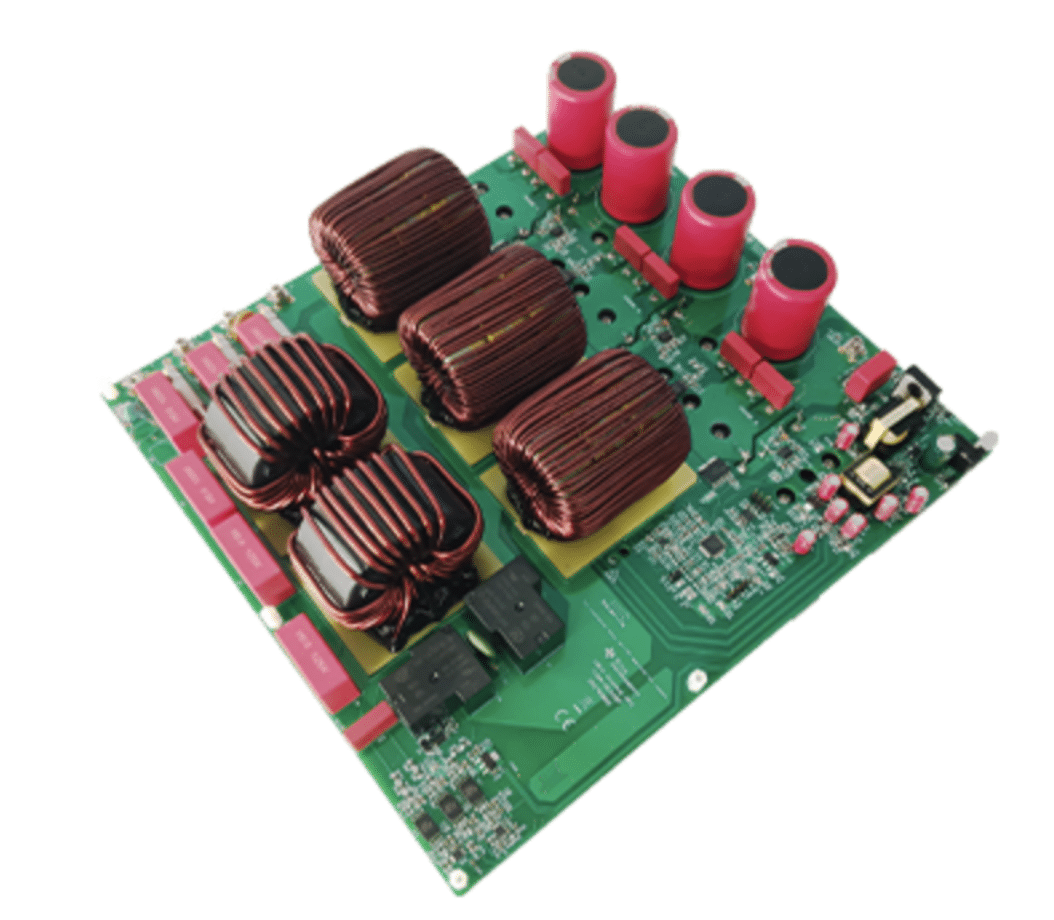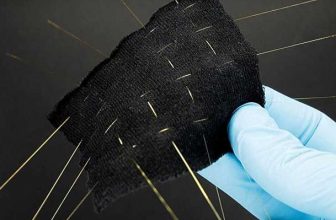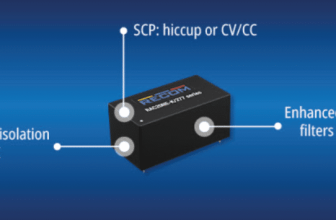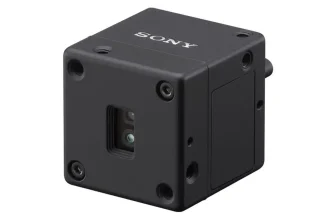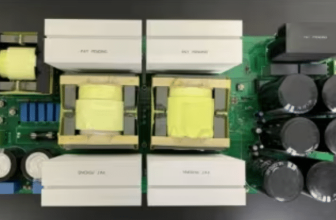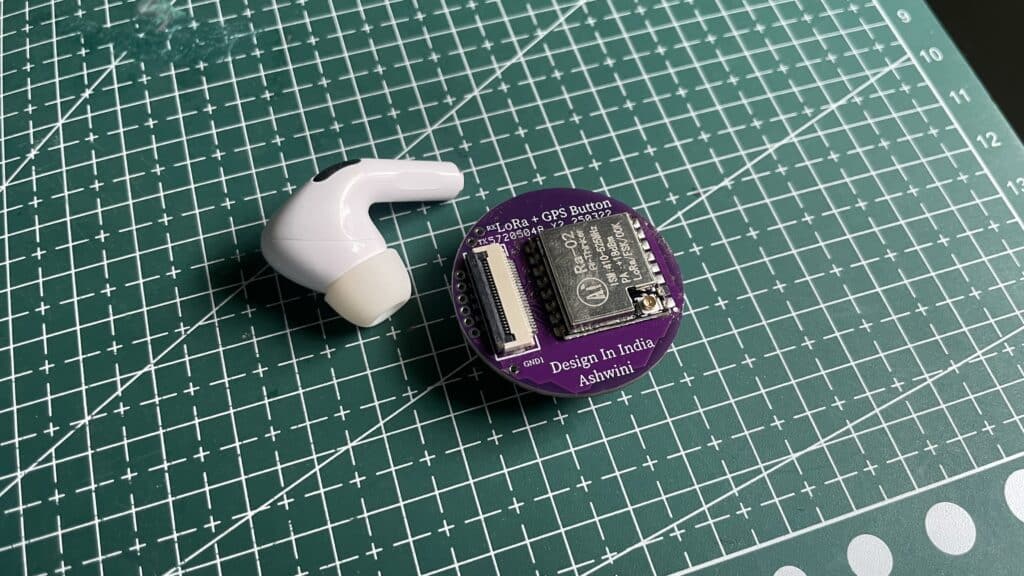
Check out our latest products
Have you ever tried squeezing a LoRa and GPS module into a wearable device? It’s a nightmare! Most modules are huge, and using separate ones for LoRa and GPS increases both cost and space. This makes designing sleek, compact devices like fitness trackers or IoT gadgets super tricky. Plus, wiring them to boards like Arduino, ESP, or nRF can feel like untangling a mess of cables.
That’s why we’re excited to share our solution: a super tiny, coin-sized (3 cm!) LoRa + GPS module that’s perfect for wearables and works like a charm with the IndusBoard Coin via an FPC cable.

It’s also compatible with Arduino, ESP, nRF, and other boards through standard I/O pins. Powered by the Quectel L86-M33 GPS chip for precise tracking and the Ai-Thinker RA-02 LoRa module for long-range communication, this module is a game-changer. The GPS runs on USART, and LoRa uses SPI, with both interfaces available via the FPC connector or I/O pins.
Best of all? It’s free and open-source! The design files are freely available for anyone to modify, manufacture, and use for personal or commercial projects. If you’re pairing it with the IndusBoardCoin, it’s completely free to use commercially, making it a fantastic choice for startups, hobbyists, and innovators. Let’s dive into how we built this awesome module!
Why This Module is Awesome
This little module is packed with features that make it perfect for wearables and IoT:

- Super Small: Just 3 cm in diameter, it’s coin-sized and fits in tiny devices like wristbands or trackers.
- All-in-One: Combines LoRa (up to 15 km range!) and GPS for location tracking in one compact package.
- Wearable-Ready: Connects seamlessly to the IndusBoardCoin via a flexible FPC cable, ideal for sleek designs.
- Flexible: Works with Arduino, ESP, nRF, and more using standard I/O pins, so it’s great for any project.
- Power-Saver: Uses just 1 mA in standby, perfect for battery-powered wearables.
- Open-Source: Free to modify and use, with no strings attached (and free for commercial use with IndusBoardCoin!).
Bill of Materials (BOM)
Here’s what you need to build this module:

Circuit Design
We designed the circuit to be compact and easy to work with:
- Power: Both GPS and LoRa run on 3.3V, supplied by the IndusBoardCoin (via FPC) or other boards (via pins).
- GPS (USART): The L86-M33 uses USART (TX/RX) at 9600 baud, connected to the FPC and I/O pins for easy access.
- LoRa (SPI): The RA-02 communicates via SPI (NSS, MOSI, MISO, SCK, RST, DIO0), with a 32 MHz crystal for accurate timing. These signals go to both FPC and I/O pins.
- Antennas: The GPS has a built-in antenna, and the LoRa module uses a U.FL connector for an external antenna to boost range.
- Connections: A 10-pin FPC connector hooks up to the IndusBoardCoin, while an 8-pin header connects to Arduino, ESP, or nRF boards.
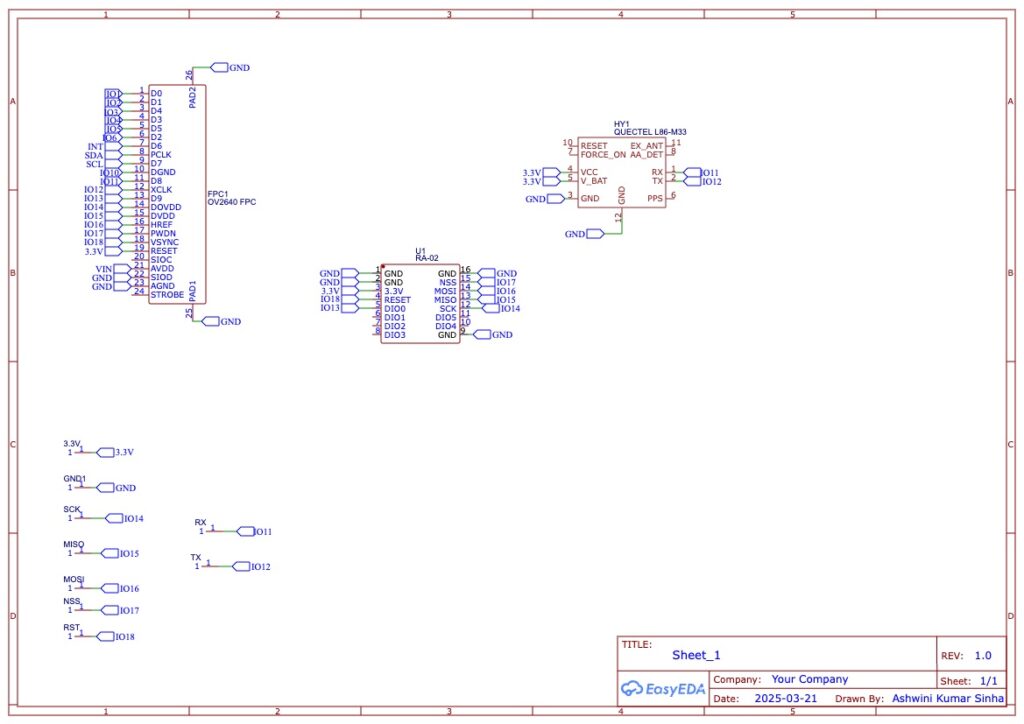
PCB Design
Next, we will design the PCB. Here we keep the size around 3cm and coin-shaped.

Our 2-layer, 3 cm diameter PCB is designed to save space while delivering top performance:
- Top Layer: Hosts the RA-02 LoRa module, FPC connector, and small components like capacitors and the crystal. SPI traces are short for clean signals.
- Bottom Layer: The L86-M33 GPS module sits here, with its antenna facing out for better satellite reception. USART traces are routed carefully to avoid noise.
- Smart Design: We used FR4 with 1 oz copper for affordability. Ground planes reduce interference, and 0805 SMD components make assembly easy. The FPC connector and pin headers are positioned for quick connections.
We created the PCB in EasyEDA and generated Gerber files for manufacturing. It’s tiny, efficient, and ready for wearables!
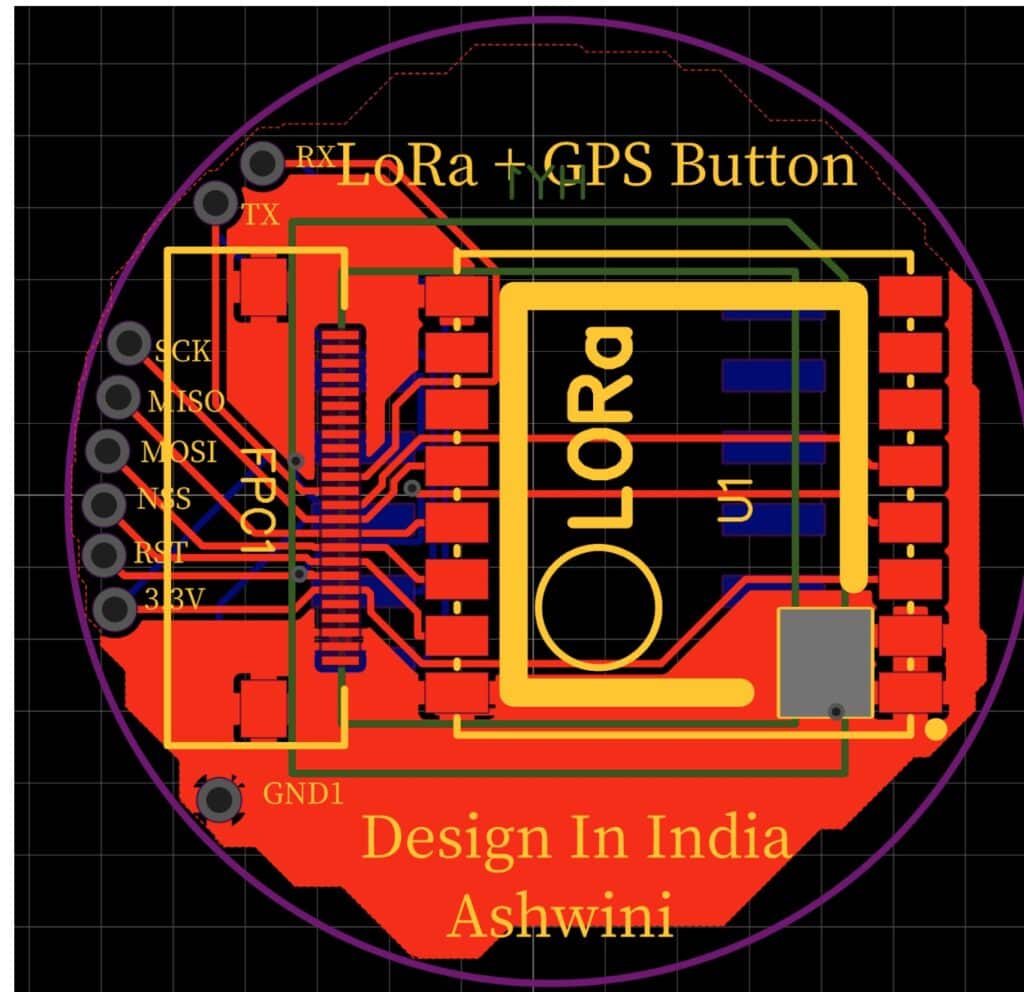
Manufacturing
You can either get the whole module PCB manufactured and SMT done from the PCB manufacturer, or you can order the SKETCHIL from the manufacturer and do SMT at home using a gun blower, SMD solder flux, and SKETCHIL.
If doing SMD soldering at home, follow the steps below; otherwise, you can skip to the testing phase.
SMD Soldering
To do SMD soldering, you need the SMD Flux kit that includes the SMD soldering syringe, the FLUX and sketchil that you get from the PCB manufacturer.
Now, do put the FLUX on the PCB using sketchil or the syringe and then put the component to be soldered there and then apply the hot air gun. And it’s done.
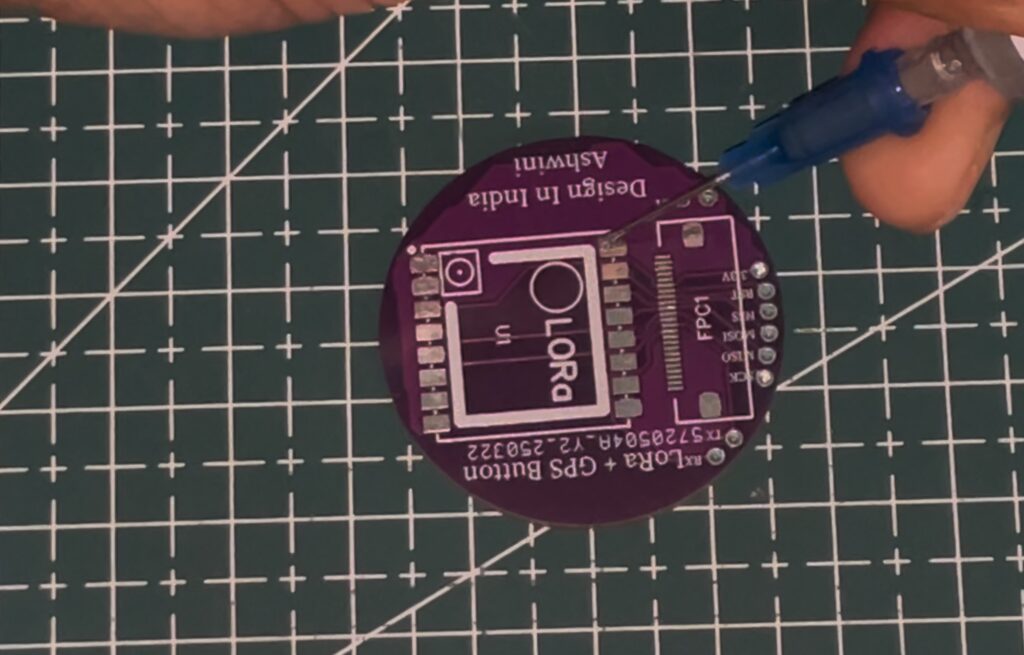
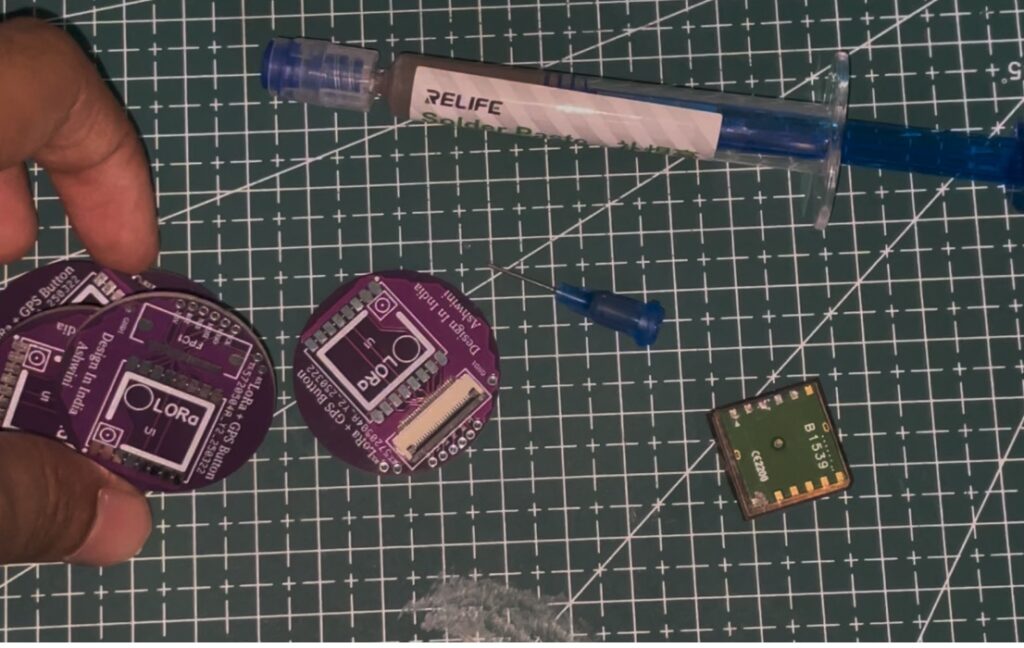
Testing: Making Sure It’s Awesome
We tested the module thoroughly to ensure it’s ready for your projects:
- Plug the FPC cable into the IndusBoard Coin and Module FPC.
- Power Test: Connect it to an IndusBoardCoin or Arduino. It should draw ~20 mA (GPS) and 8 mA (LoRa RX) at 3.3V.
- GPS Test: Use TinyGPS++ to read location data outdoors. It locks onto satellites in 2-3 minutes with ±2.5 m accuracy.
- LoRa Test: Set up two modules (sender and receiver) with the LoRa library. Send GPS data over 1 km in urban areas or 15 km in open spaces.
- Compatibility: Test with ESP32, nRF52840, Arduino Uno (via I/O pins), and IndusBoardCoin (via FPC). All signals (USART, SPI) should work perfectly.
- Wearable Test: Integrate it into a wristband prototype. Confirm it tracks location and sends data reliably while staying power-efficient.
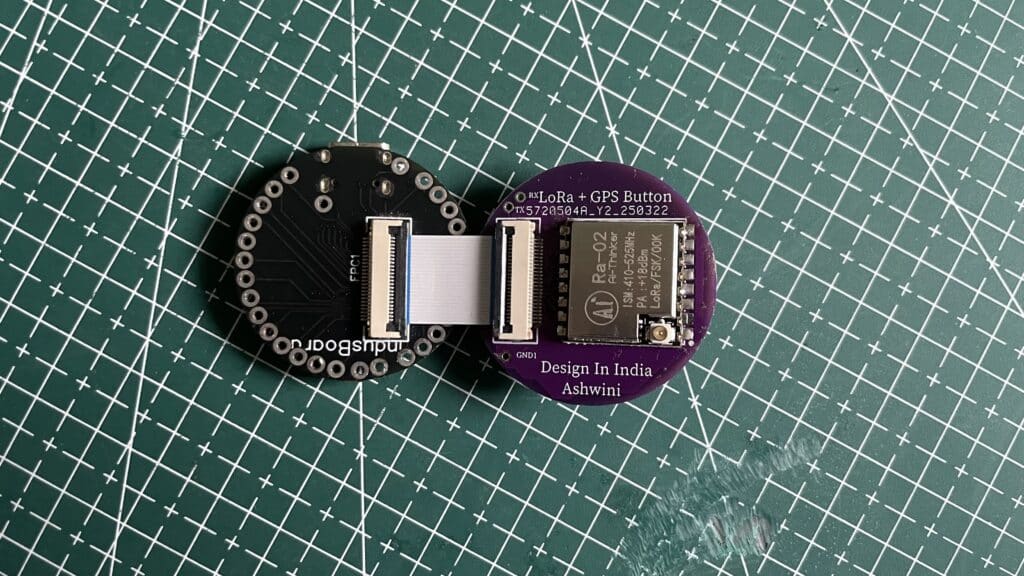


![[5G & 2.4G] Indoor/Outdoor Security Camera for Home, Baby/Elder/Dog/Pet Camera with Phone App, Wi-Fi Camera w/Spotlight, Color Night Vision, 2-Way Audio, 24/7, SD/Cloud Storage, Work w/Alexa, 2Pack](https://m.media-amazon.com/images/I/71gzKbvCrrL._AC_SL1500_.jpg)



![[3 Pack] Sport Bands Compatible with Fitbit Charge 5 Bands Women Men, Adjustable Soft Silicone Charge 5 Wristband Strap for Fitbit Charge 5, Large](https://m.media-amazon.com/images/I/61Tqj4Sz2rL._AC_SL1500_.jpg)

